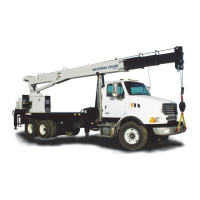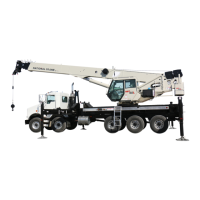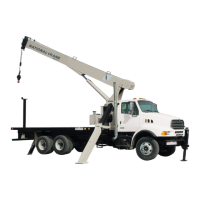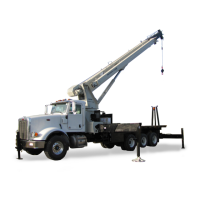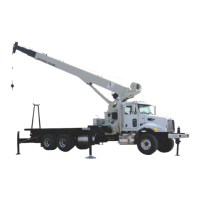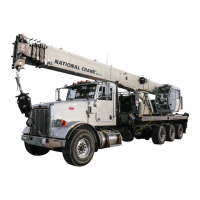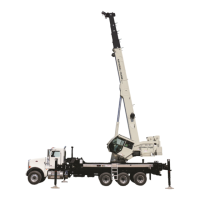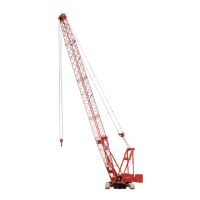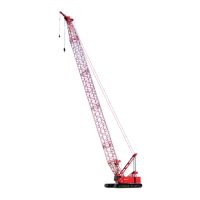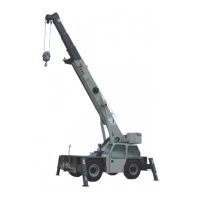Published 08/16/19 Control # 112-05 1-25
500E2 SERVICE MANUAL INTRODUCTION
National Crane
Wire Rope Replacement (All Wire Rope)
No precise rules can be applied to wire rope replacement
because of the variables involved. Determining the condition
of the wire rope depends largely upon the judgment of a
qualified person.
The information below is excerpted from a National
Consensus Standard as referenced by Federal Government
Agencies and Manitowoc Crane Care recommendations to
help determine when wire rope needs to be replaced. Wire
rope shall be taken out of service when any of the following
conditions exist:
• In running ropes, six randomly distributed broken wires
in one lay or three broken wires in one strand in one lay
(Figure 1-6).
• In standing ropes, more than two broken wires in one lay
in sections beyond end connections or more than one
broken wire at an end connection.
• Wear of one-third the original diameter of outside
individual wires.
• Kinking, crushing, bird caging, or any other damage
resulting in distortion of the rope structure.
• Evidence of heat damage from any cause.
• Reductions from nominal diameter of more than 5%.
• Severe corrosion evidenced by pitting.
• In rotation resistant rope, two randomly distributed
broken wires in six rope diameters or four randomly
distributed broken wires in 30 rope diameters.
• National Crane recommends that for cable extended
booms, a single damaged wire rope assembly shall
require replacement of the complete set of extension
cables.
• National Crane recommends that boom extension
cables be replaced every seven (7) years.
Seizing Wire Rope
It is important to seize the ends of rotation resistant wire
ropes to prevent the displacement and unraveling of the
individual wires and strands at the ends. All preformed and
non-preformed styles of wire rope need to be seized prior to
cutting. Seizings must be placed on both sides of the point
where the wire rope is to be cut. The two methods for seizing
wire ropes are described below.
Method 1
Using a length of soft annealed wire, place one end in the
groove between two strands of the wire rope. Turn the long
end of the annealed wire at right angles to the wire and wrap
it tightly over the portion in the groove.
The two ends of the annealed wire should be twisted
together tightly. Cut off the excess wire and pound the twist
flat against the wire rope (Figure 1-7).
Method 2
Wind a length of soft annealed wire around the wire rope at
least seven times. Twist the two ends together in the center
of the seizing. Tighten the seizing by alternately prying and
twisting. Cut off both ends of the wire and pound the twist flat
against the rope (Figure 1-8).
6
1
2
3
4
5
6
One Lay
FIGURE 1-6
One lay is parallel to the rope center-line and is the
distance for one strand to make a complete spiral
around the rope.

